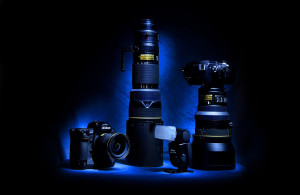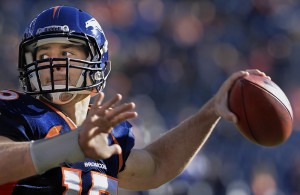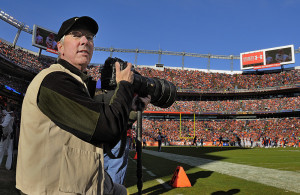
Image #1…Camera and Custom Menu Settings.
Question #1…Hey Dave, I have a D3s and love it, but I’m not sure I’m getting out of it all it has to offer. What are your camera settings? …Glenn, Virginia.
Answer……. Great question Glenn, short and to the point. Get ready, here is the long answer. At the time of this writing I was using the Nikon D3s camera, but by the time this article is posted in February I hope to be using the NEW Nikon D4. Many of Nikon’s cameras have very similar custom menus and choices of settings. I believe most of the settings I address in this answer will also apply to many of the higher end Nikon cameras like D300s, D700, D7000, D3, D3s, and also the Nikon D4. It’s always best to check your manual to see if my settings are available on your own camera. Here are my Camera and Custom Menu Settings for my Nikon D3s. If a setting is not mentioned then it remains in the default mode.
- I work with Manual Exposure settings about 98% of the time, however when lighting conditions fluctuate quickly, ex: when I follow a player from the locker room, to the tunnel, and then outdoors onto the field, I use Aperture Priority.
- My Auto Focus setting is “C” continuos (located on the front of the camera body) because I want the lens to always be follow focusing on my subject. I do not use Single Servo…if I want to hold the focus on my subject and then recompose the scene I simply press the AF Lock button on the back of the camera. With my camera’s Auto Focus setting in “C” continuos the Priority Selection is in the Release mode, which allows the camera to shoot a picture even if the “In-Focus” indicator is not illuminated. Sometimes when following the game action the AF point or group might not be placed on the moving subject long enough to where the “In-Focus” indicator is illuminated, but the subject is actually in focus. Therefore, I want the camera to make a picture whenever I press the shutter. If I were to set Priority Selection in the Focus mode the shutter would not release unless the ‘In-Focus” indicator is illuminated. This can drastically slow down the continuos frames per second shooting rate (from 9 fps to as low as 2 fps) because the “in-Focus” indicator has not had time to illuminate during the burst of multiple fps. Both the shutter and back button will activate the auto focus capability.
- A unique Nikon setting is Focus Tracking with Lock-On. I set this to Long (5) for team sports, and (2) for individual isolated sports. This custom setting when set to Long (5) allows a slight delay in the auto focus picking up focus on an object that crosses in between my camera and my subject. Example: it helps “Lock-On” focus on a quarterback even though other players are crossing between us. I don’t want the focus to “jump” too quickly to a referee if he steps in front of me. The setting of (2) allows the auto focus to instantly lock-on to another subject. Example: Focus Tracking with Lock-On setting (2) works well when shooting two T&F sprinters advancing towards the finish line and you need to shoot one and then instantly shoot the other when it is a close race.
- My camera is usually set on a Single Focus Point for most team sports coverage like football, basketball, and ice hockey. For individual isolated sports where the athlete is by themselves like Figure Skating, Track and Field, Swimming, Motorsports, and Gymnastics, I like to use the 3D Tracking Dynamic AF Area mode with 51 points. Some sports photographers use the 9 points and claim that the smaller “cluster” of points works best buy tracking faster.
- I set my camera to the Auto FP (High Speed Sync) setting under the Bracketing/Flash. This allows me to use high shutter sync speeds above 1/250 when using Speedlights.
- My White Balance setting is almost always set on the Kelvin scale. Auto WB might be used in a situation similar to the Aperture Priority scenario I mentioned earlier.
- High ISO Noise Reduction is set to Medium, but with the NEW D4 camera there may not be any need for High ISO Noise Reduction.
- I always activate the Long Exposure Noise Reduction mode for my Lightpainting work.
- I shoot both RAW and jpg Fine files. Magazines like Sports Illustrated, ESPN, Newsweek and others want to use the RAW file, but usually have photographers transmit the smaller jpg Fine files to make a selection from more quickly. Once the image to be used is selected by the editor from the smaller jpgs, then the RAW file is transmitted for publication. Even if a client only needs the jpg version I always want to have the RAW 14 bit file which provides me with the ultimate in quality.
- Picture Control settings can vary depending on what the subject is. Standard setting is my all-purpose choice, but I usually reduce the Sharpness to almost zero. After all, why would I want to sharpen the smooth skin of a beautiful bride or the sky over a landscape? When additional Sharpness is required, say on the eyes and hair, or clothing that has a lot of texture, slight Sharpening can be added in the post-processing phase. The Vivid mode offers brilliant color saturation and additional contrast and sharpness. If the subject is a colorful landscape, like trees in fall colors, Vivid is terrific. However, this setting is too over the top for portraits or wedding imagery for my liking.
- I use the SanDisk Extreme Pro 32G Flash Card. They are very fast and very reliable, and that is very important to me.
- There are other custom settings, but they remain in the default mode. The camera settings I have listed might be helpful to many of you, but it is always wise to photograph some test situations to determine what settings work best for your own photography. Wow, I nearly have Carpal Tunnel Syndrome after writing this answer. Again, great question Glenn. Hope this answer helps you and anyone else who is setting up their camera. Way to be #1 on the WATR Q&A Series my friend.
|
 Image #2…NFL and any Pro Sports Access. Image #2…NFL and any Pro Sports Access.
Question #2…I’ve been a fan of your work and your articles for a couple of years now. Thanks for sharing. I shoot sports for my college. The school uses my pictures all the time and it’s a good gig, but how do I move up to shoot the pro games and get my pictures into the magazines like Sports Illustrated? Thanks for your time. …Kyle, Texas.
Answer…. Howdy Kyle. I’m excited to hear that your college makes good use of your images. This indicates to me that your work is strong enough to be published. Acquiring a coveted Field Photo credential for a NFL game is reserved for the working media. You need to have an editor from a newspaper or a magazine or a wire service make the credential request for you. This doesn’t mean you are a working staff member for that paper or magazine, or that you are even getting paid by that publication or wire service, it just means you must have an editor submit the request for you. Offering your services as a sports photographer for no financial compensation is a way to get your foot in the door and allows you to demonstrate that you can get the job done better than someone else that the paper or magazine or wire service is currently hiring. I know,…I hear you…”working for free does not pay the bills”, but covering a game and producing “great images” might land you a job that does pay. Producing great images is the key! Producing average pictures will not earn you a return to the sidelines for next Sunday’s game. If you are trying to prove yourself as being better than the current person that the magazine or wire service uses, then you better hustle, be professional in all respects, and deliver great images. As they say, “Don’t try and win on points, you must knock your opponent out!” I suggest submitting your football portfolio to some of the wire services first. There are numerous wire service agencies that use and hire sport photographers all over the country for everything from College Football to Formula I. Look at the photo credits adjacent to pictures in newspapers and magazines. There you will see a wide variety of agency names next to the photographer’s name. Now, go to work and Google the agency, check out their website, and find the photo editor’s name and contact info, then go through the riggers of submitting your football portfolio. Your pictures must be relevant and not overdone with PhotoShop. Submit only your best, 20 at most, and a wide variety…Meaningful Game Action that includes clearly seeing the football, QB, RB, WR, Conflict, Celebration, Personality, Key Touchdown and of course the Play of the Game. To work for a wire service agency you must have the ability and technology to transmit your images from the stadium pressroom at halftime and again immediately after the game. It is hard work, but very rewarding to be a part of the working media. Once you have established yourself as a photographer who always captures great action and the key moments of the game, then magazines like ESPN and Sports Illustrated will want to get to know you. I have photographed college and NFL football for nearly 30 years beginning with John Elway’s rookie debut in 1983 and up to this current season. I have covered football games for a wide variety of clients ranging from Sports Illustrated to Newsweek to ESPN to NFL Properties, wire service agencies, football annuals, and trading card companies. There is work out there, but you must go after it and find it. For this image of Denver Bronco’s quarterback, Tim Tebow, I used a Nikon D3s, ISO1250, 1/1250 at f7.1, Nikon 400mm f2.8 with TC-E 1.4x Teleconverter (550mm focal length), WB 5880K, Gitzo Carbon Fiber Monopod, SanDisk 32G Extreme Pro Flash Card. This is a full frame image with no cropping necessary thanks to Tebow’s scramble and throw style of play. Work hard Kyle, be relentless, and hone your portfolio to be unbeatable… “Chase Perfection and you will Catch Excellence”, Vince Lombardi. Hope to see you on the sidelines someday. Adios. Dave |

Image #3…Sport Strobe Gear.
Question…My name is Lars. I was attending a Sports Photography Workshop you were teaching in the US a few years ago. I was attending one of your classes about the use of sport strobes on indoor swimmers. It was great to work with the strobe system. Denmark has just completed a new arena that has catwalks, suitable for placing sport strobes. I want to ask you for some advice on what gear to buy for it so I get started in the right way on the gear, and of course any advise you can share with me. I will be honest with you and say that this field is completely new for me and I really don’t know where to start. It is a kind of photography that has not been done before in Denmark, but I think it is a good way for me to stand out of the crowd and raise my level of photography.
I sincerely hope you can help me out.
…Lars, from Soeborg, Denmark
Answer…Hi Lars. Sure, I remember you. Glad things are going well for you in Denmark. This kind of question requires nearly a book to answer. Best advice I can give is to read through my Workshop at the Ranch articles about lighting…both Speedlights and Sport Strobes. You might find it easiest to use the NEW Search box to locate all the articles that apply to your question. Just enter words like on Sport Strobes, Arena Lighting, or even the word Catwalk will produce a list of related articles about sport strobe usage. With the list of WATR articles at your mouse click you can then dig in for information. Also, my book The Way I See It… has an entire chapter devoted to Arena Sport Strobe Lighting. I use the Elinchrom strobe system. Elinchrom strobe systems have a very fast/short Flash Duration which is suitable for sports action. I currently use the Elinchrom 600 RX units, and the Elinchrom Ranger RX strobes, which have 1100ws of portable power, and the “A” (action) Heads. Elinchrom is distributed by Manfroto, here in the US, but is a Swiss company and is common in Europe. I have used my original Elinchrom 1000R Sport Strobe mono-block units for over 20 years. Although no longer available in the US, I believe they are still sold in Europe. The Pocket Wizard multi MAX wireless system is still great for firing the strobe from a great distance, and the new FLEX system by Pocket Wizard allows you to use faster shutter sync speeds like 1/500, 1/1000…. or higher if you are using the Nikon D300s. I also use multiple Speedlights to light up small college arenas. I use 4-6 SB-900 Speedlights attached to a FourSquare off camera in the REMOTE mode and secured to the arena catwalk. I fire them using the Nikon SU-800 Commander with the RadioPopper PX transmitter-Receiver system. I use IR Cables made by Michael Bass Designs to connect the PX receiver to the Speedlight. This might be a good way for you to begin lighting small arenas…or portions of larger arenas. Many of my 2010 WATR articles cater to this concept and use of High Speed Synch with Speedlights. Try the Search box Lars and dig in. This image of college basketball is one of my favorite examples using the Elinchrom strobes. It was captured with a Nikon D2h, ISO320, 1/250 (flash sync speed) at f6.3, Nikon 12-24mm lens, WB 5600K, 3 Elinchrom 600 RX strobes with blue Roscoe Gels over the front of the sport reflector and aimed at the audience, 2 Elinchrom 600 RX strobes without gels located over the players end of the court, Pocket Wizard Multi MAX Transceivers, Manfroto Super clamps are used to mount the strobes to the catwalks over the court, Safety Cables. The use of strobes can greatly increase the dramatic appearance of your sports imagery. It is an involved process that is not mastered over night. You will need permission from the school or event coordinator. You should have liability insurance. It is my suggestion that you install the strobes a day or two in advance of the game, test the system and let the team and yourself, get aquatinted with the flash. Great question Lars, hope this answer helps you pioneer strobed sports images in Denmark. Adios. Dave
|

Image #4…Biography PR Pack
Question…Dear Mr. Black, I’m doing a report on you for my class assignment, can you email me back a bit of info about yourself for the biography section? …Thanks, Kali
Answer… Hi Kali, I’m flattered that you are doing your report on me. Everything you need for the biography section of your report can be found in the About category of my website. Simply “click” About and you will see a short career biography. Should you need additional biography information just “click” PR Pack and download the Life and Career Biography, which also includes a portrait and an image from my portfolio. Keep in mind that my images are © copyrighted, so please use them only for your report. Take care. Dave
Kali’s request is not unusual and in fact is just 1 of well over 100 requests I field each year. Some requests come from aspiring photography students who are at the High School or University level. Other requests come from a variety of workshop organizers and University photo departments were I am scheduled to teach or lecture. I will admit that in the past I have provided only a short bio to these requests. I hope the NEW website with its PR Pack is helpful to anyone who would like my biography. This working portrait was made by one of the nations finest newspaper photographers and a close friend, Mark Reis. Nikon D3s, ISO400, 1/1000 at f7.1, Nikon 24-70mm lens, WB 5600K, SanDisk 32G Flash Card.
I hope that you are all enjoying the NEW website. Many of you have taken the time to email me and offer your comments…. All good I might add. Thanks; it’s nice to know people are pleased with the NEW design and upgrades. The Search box seems to be the biggest hit with everyone. By just typing in a word like Speedlights, or an athletes name like Tom Brady, or even a piece of equipment like Inova Bolt 2L a list of WATR articles and or image locations will appear. This should make it quick and easy for anyone to find information, images, and complete teachings that I have written about. So give the Search box a try and find something you have been looking for. |






